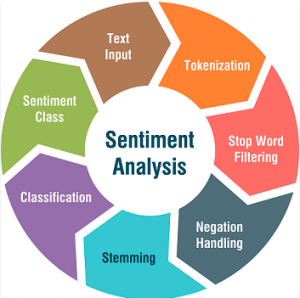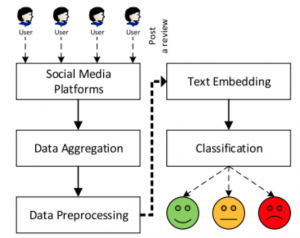In the digital age, where information flows ceaselessly, understanding the sentiments expressed in vast volumes of text has become a critical task. Sentiment analysis, coupled with machine learning, has emerged as a powerful tool to navigate through this sea of data. This article delves into the symbiotic relationship between sentiment analysis and machine learning, exploring the methodologies, applications, and impact of these technologies on the way we perceive and interact with digital content.
Is Machine Learning Used in Sentiment Analysis?
Machine learning forms the backbone of modern sentiment analysis. It enables systems to learn and adapt from data, uncovering patterns and nuances within language that might elude traditional rule-based approaches. As Arthur Samuel once defined it, “Machine learning gives computers the ability to learn without being explicitly programmed.” In sentiment analysis, this translates to systems that evolve and improve their understanding of emotions over time.
Machine Learning Techniques for Customer Sentiment Analysis
Customer sentiment analysis is a key application of machine learning. By employing techniques like Natural Language Processing (NLP) and supervised learning, businesses can gain valuable insights from customer feedback. As Andrew Ng emphasizes, “We can’t expect to have a deep understanding of human language without developing a deeper understanding of how the human mind works.” Machine learning facilitates this understanding, allowing organizations to decipher customer sentiments and tailor their strategies accordingly.

How to Create a Sentiment Analysis Machine Learning Mode
Building a sentiment analysis model involves several steps. From data collection and preprocessing to model selection and evaluation, the process is intricate yet rewarding. Utilizing popular libraries like NLTK and Scikit-learn in Python, developers can implement machine learning algorithms such as Support Vector Machines and Neural Networks to craft robust sentiment analysis models. The journey from raw data to a predictive model embodies the essence of the machine learning approach.
Can ChatGPT Do Sentiment Analysis?
While ChatGPT, powered by OpenAI’s language model, is adept at understanding and generating human-like text, its primary focus is not sentiment analysis. However, developers can leverage its capabilities for contextual understanding in applications where sentiment interpretation is essential. The synergy between language models like ChatGPT and dedicated sentiment analysis models showcases the flexibility and collaborative potential within the realm of AI.

Sentiment Analysis and Machine Learning in Python
Python has emerged as the go-to language for machine learning and sentiment analysis. Its extensive libraries and frameworks, combined with a vibrant community, make it an ideal choice for developers. From implementing basic sentiment analysis tasks using libraries like TextBlob to diving into advanced machine learning models, Python provides a versatile environment for exploring the nuances of sentiment within text.
Best Algorithm for Sentiment Analysis
The quest for the best sentiment analysis algorithm is an ongoing one. Various approaches, including Naive Bayes, Random Forests, and Recurrent Neural Networks, have shown success in different contexts. As Yann LeCun remarks, “We need learning algorithms that understand and exploit the underlying structure of the data.” The choice of the best algorithm depends on factors such as the nature of the data, the scale of the analysis, and the desired level of interpretability.

Sentiment Analysis and Machine Learning Example
To illustrate the symbiosis of sentiment analysis and machine learning, consider a scenario where a social media platform employs machine learning models to categorize user posts based on sentiment. Through continuous learning, the system adapts to evolving linguistic trends and user expressions, enabling the platform to provide a more personalized and emotionally intelligent user experience.
Sentiment Analysis Dataset
The cornerstone of any machine learning endeavor is the dataset. In sentiment analysis, curated datasets with labeled examples of positive, negative, and neutral sentiments serve as the training ground for models. The availability of diverse and well-annotated datasets, such as the IMDb movie reviews dataset, fuels progress and innovation in sentiment analysis research.

Conclusion
Sentiment analysis and machine learning intertwine to create a landscape where machines comprehend and respond to human emotions. From customer feedback shaping business strategies to language models understanding the context in conversations, the journey is marked by continuous learning and adaptation. As we navigate the digital era, the synergy between sentiment analysis and machine learning promises not only efficiency but a deeper connection between technology and human expression.
Hi there, I enjoy reading all of your article.
I like to write a little comment to support you.